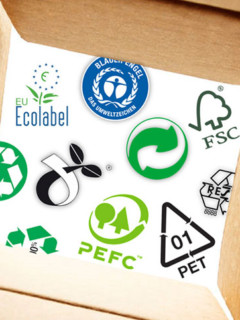Disposable or disposable gloves offer basic hygiene and safety protection. Various sizes and materials are available. Disposable gloves are usually made of latex, nitrile or vinyl. What exactly is the difference, and what is the best choice? These and many other questions are answered in detail below.
1. Vinyl, latex or nitrile?
Most disposable gloves are made of vinyl, latex or nitrile. Three materials that each have very different effects on the applications and properties of your glove. You can compare them below:
Vinyl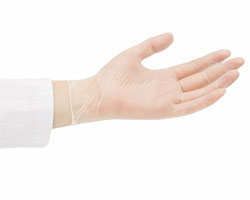 |
Latex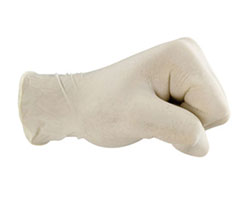 |
Nitrile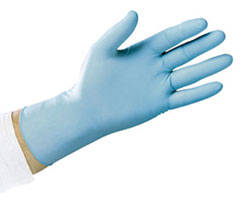 |
|
| . Advantage |
Cheapest | Most comfortable and flexible | Strongest + allergy-free (without latex or powder) |
| . . Disadvantage |
Less comfortable than nitrile or latex | Not suitable for people with latex allergies + does not protect against petroleum products (oil, diesel, petrol) | Slightly more expensive than vinyl and latex |
| . . Use |
 Unique blend of latex, nitrile and neoprene for even more comfort and strength.
Unique blend of latex, nitrile and neoprene for even more comfort and strength.- Silicone-free to prevent marks on metal plates and glass.
- Outer finish with studs for better grip.
- Chlorinated inner finish for easier donning and doffing.
- Protects against chemical splashes.
- Suitable in laboratories and in pharmaceutical production.
2. Powdered or non-powdered?
Disposable gloves are often available in powdered and non-powdered versions. The ‘powder’ referred to here usually consists of corn starch. It makes it easier to put on and take off the gloves. Moreover, it absorbs moisture and sweat better, making the gloves more pleasant to wear.
However, powdered gloves are not always recommended. In the food industry or in a clinical environment, for example, you want to avoid corn starch mixing with your products. Moreover, the corn starch can cause allergies. Therefore, in these sectors, you usually use non-powdered variants.
Powdered gloves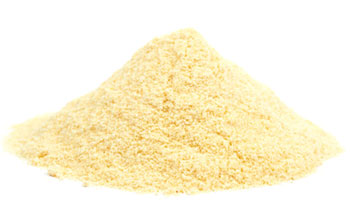 |
Non-powdered gloves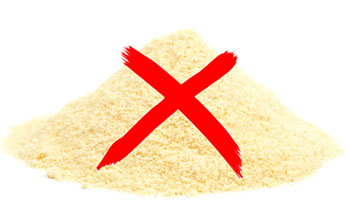 |
3. Which size disposable gloves should I choose?
To determine the correct size of your disposable glove, first measure the circumference of your hand. This circumference runs around the knuckle of your little finger to the knuckle of your index finger (exclude your thumb). Are you between sizes? Then choose the smaller one. This is because gloves stretch slightly during use. By choosing the smaller size, they will stay close to your hand and wrist. Good to know: the size of a glove is usually expressed in inches.
Hand circumference in cm |
Glove size in inches |
International size |
| 16,5 | 6 | XS |
| 18 | 7 | S |
| 19 | 7,5 | S |
| 20 | 8 | M |
| 21,5 | 8,5 | M |
| 23 | 9 | L |
| 24 | 9,5 | L |
| 25,5 | 10 | XL |
| 28 | 11 | XXL |
4. Where are disposable gloves used?
Disposable gloves are used in a very wide range of industries. In some cases, their use is even mandatory. You can find them here, among others:
- Laboratories,
- Food sector,
- Veterinarians and veterinarians,
- Beauty sector (hairdressers, nail salons, etc.),
- Healthcare (hospitals, dentists, nurses, etc.).
Depending on your profession and workplace, your choice of glove material will be decisive. Latex, for example, offers good protection against chemicals, bacteria and viruses. Do you work with oil or grease? Then it is best to stop at nitrile gloves.
Finally, in addition to the material, colour can also play a role. The average disposable gloves are white or slightly transparent. If you work in the food industry, blue gloves are generally recommended. This is following the HACCP guidelines. So why blue? Blue was chosen because this colour rarely occurs naturally in our food. So should a blue glove end up in the food for some reason, it will be noticed much quicker.

5. How should you use disposable gloves?
What do you best keep in mind when wearing (and disposing of) disposable gloves? We list a few concerns for you below.
- Wash and dry your hands thoroughly before wearing disposable gloves.
- Change gloves regularly and avoid damage or transmission of bacteria.
- Always consider the specific application when making your choice. In a medical environment, for instance, it is preferable to use non-powdered gloves.
- Whether they are made of latex, vinyl or nitrile, never throw your disposable gloves away with the plastic, but opt for the residual waste.












